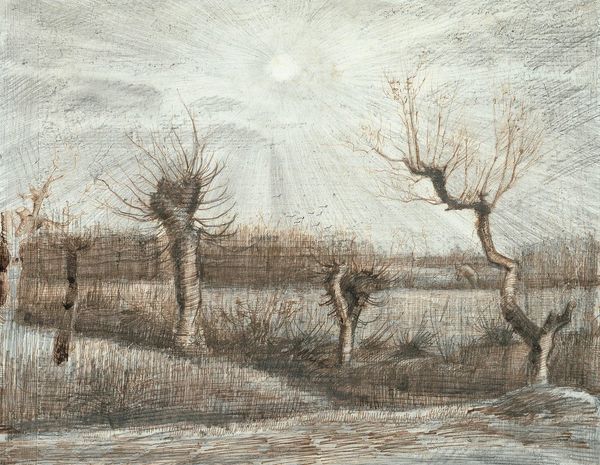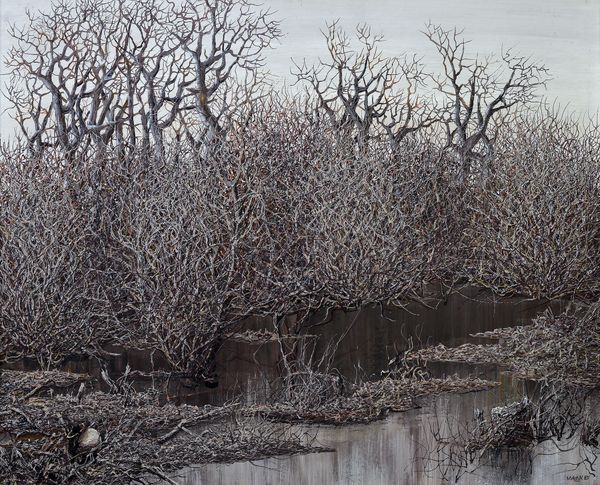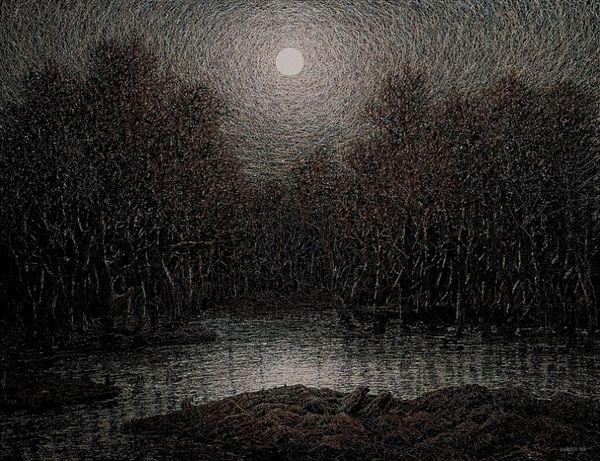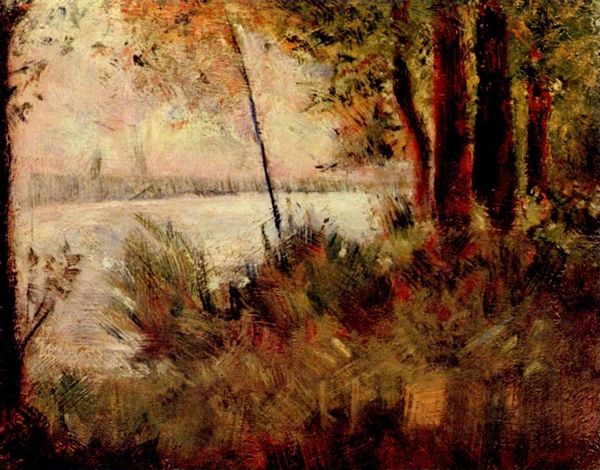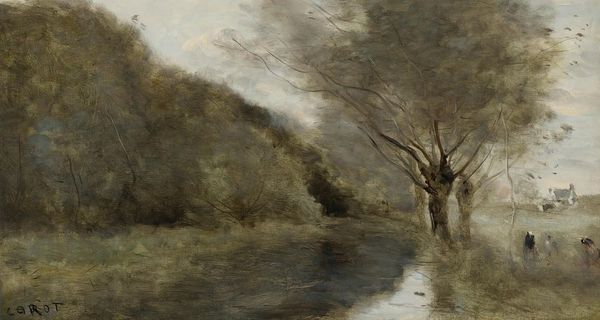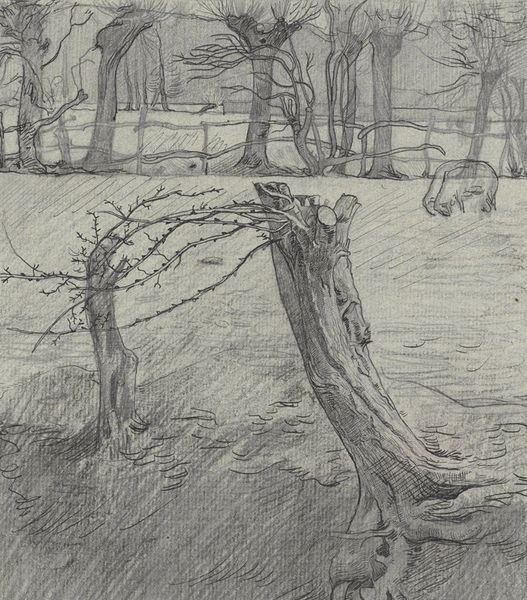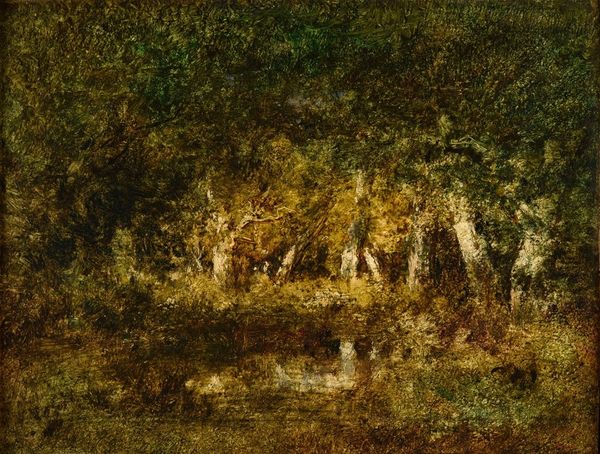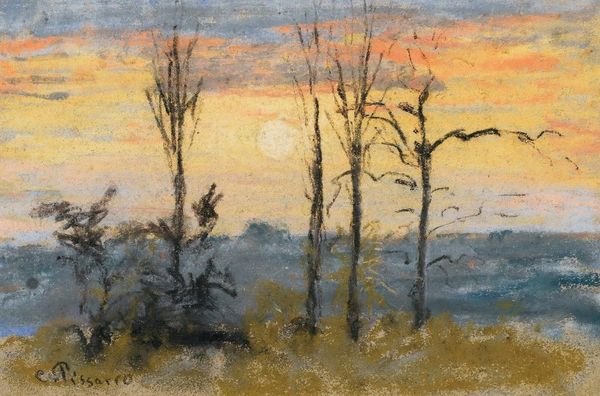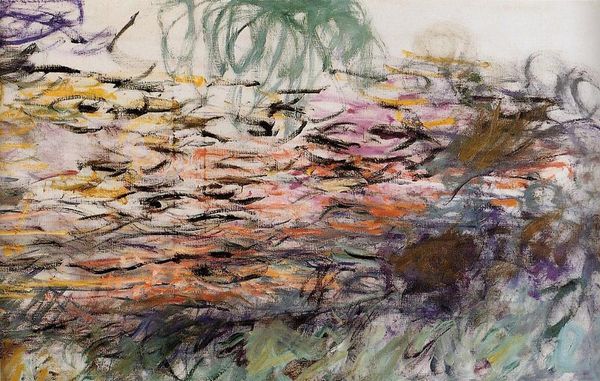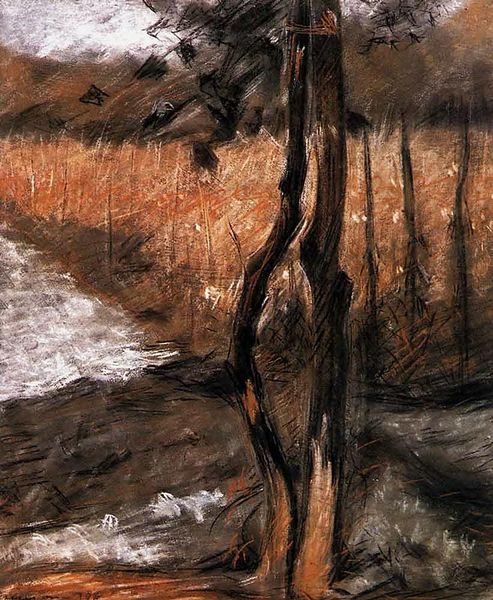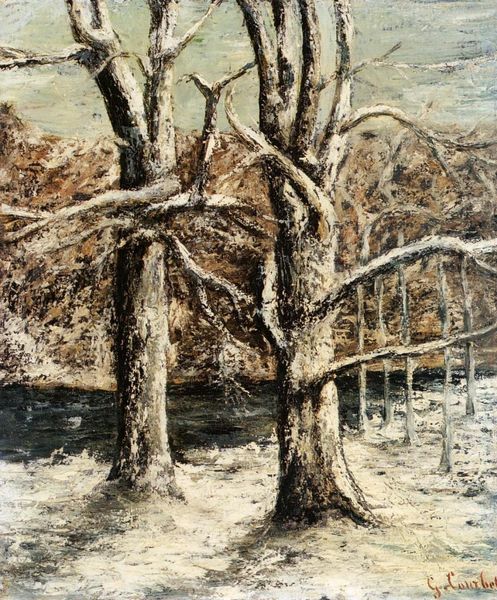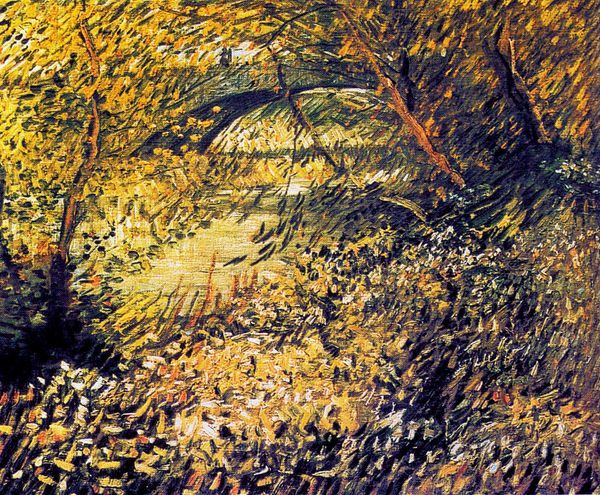
tempera, painting
#
tree
#
sky
#
tempera
#
painting
#
landscape
#
figuration
#
natural-landscape
#
water
#
naturalism
Copyright: Ivan Marchuk,Fair Use
Curator: This is Ivan Marchuk’s "Before the Rain," a tempera painting dating from 1983. Editor: The palette strikes me first – it's overwhelmingly brown, like sepia tones in a fading photograph. A rather desolate, quiet sort of landscape. Curator: Marchuk developed a very distinct style, which he called "Plyontanism," derived from a Ukrainian word suggesting interwoven, tangled structures. Editor: Absolutely, look at the texture he achieves. It's an entire thicket of branches, a mesh almost, covering the horizon line. Is that water reflecting them below? Curator: Precisely. Considering the political climate of the Soviet Union at the time, a seemingly apolitical landscape such as this one took on significant symbolic weight. This return to an explicitly Ukrainian landscape functioned as resistance against the homogenizing aesthetic promoted by the state. Editor: So, the bare trees might suggest a loss, a cultural barrenness imposed by Soviet policies, or perhaps the resilience of nature that can endure difficult conditions. The approaching storm then becomes a metaphor for change. The sky pressing down with a diffused light hints to a suppressed reality, with an unconflicted wish to rise up. Curator: Exactly! In terms of technique, Marchuk was a master of tempera, which lends itself to the dry, almost brittle quality of the scene. You can really see the artist built up these complex layers. The detail draws the eye. The almost woven brushstrokes lend a certain weight. Editor: Thinking of the painting as an act of resistance, the muted tones can be read not just as desolation, but as defiance. Brown, as color, takes a very physical aspect and in connection with natural phenomena may act as reminder to return to natural symbols such as home, warmth, security. This makes me ponder about our connection to the Earth and collective history and how symbols shift meaning through contexts. Curator: It highlights the painting's strength – it isn't just a landscape; it's a statement about cultural endurance and self-expression during periods of political constraint. Editor: I come away seeing more layers – historical, symbolic and emotional - than at first I had thought. Thanks for unveiling this rich and complex narrative to me!
Comments
No comments
Be the first to comment and join the conversation on the ultimate creative platform.
